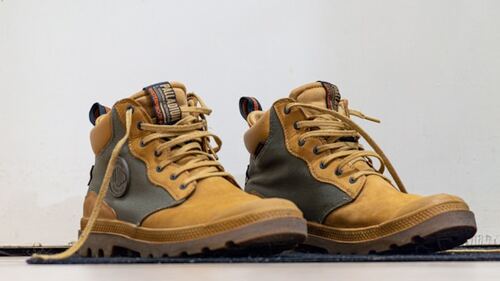When it comes to outdoor footwear, which option is best for staying dry? Are waterproof and water-resistant boots the same, or do they offer distinct benefits? For those who spend time in wet conditions, understanding the difference is essential.
How can choosing the right pair of boots affect comfort and durability? Both types aim to protect feet from moisture, but they serve different purposes. By knowing the specific features of waterproof boots (S.V. 2400, P.37), compared to their water-resistant counterparts, making an informed decision becomes much easier.
Exploring Waterproof Boots
These boots offer full protection against moisture, making them ideal for wet or harsh environments. Using materials like Gore-Tex or sealed rubber, these boots block water from entering, ensuring dry feet in heavy rain, snow, or muddy terrain. They often feature sealed seams and gusseted tongues for maximum defense.
While less breathable than water-resistant options, these incorporate breathable membranes to reduce trapped heat and moisture. Perfect for activities like hiking, trekking, or working outdoors in wet conditions, these boots provide reliable, long-term protection in any weather.
Exploring Water-Resistant Options
Water-resistant boots are designed to repel moisture to a certain extent but not to fully block it. These shoes typically have treated fabrics or coatings that allow them to resist splashes and light rain. However, they are not intended to withstand heavy or prolonged water exposure.
This type of footwear is well-suited for those who encounter occasional wet conditions but do not need full waterproofing. Water-resistant options are often more breathable than waterproof models, making them more comfortable for everyday wear. However, they are not the best choice for activities that involve wading through water or standing in the rain for long periods.
How Materials Affect Performance
The materials used in both waterproof and water-resistant boots significantly influence their effectiveness. For waterproof models, materials like rubber, treated leather, and synthetic membranes are standard. These materials provide a complete barrier against water and are often combined with sealed seams to prevent leaks.
For water-resistant styles, common materials include treated suede, nylon, and polyester. These materials receive treatments that help repel water, but they lack the additional barriers found in waterproof designs. Consequently, they are less suitable for extreme wet conditions. Knowing the difference between materials can help in selecting the right type for specific environments and activities.
Comparing Breathability and Comfort
Breathability is an essential factor to consider, especially for those who plan to wear their boots for extended periods. These boots are usually less breathable due to their impermeable materials, which can trap moisture inside and lead to discomfort. Some modern designs incorporate breathable membranes, but these may not be as effective as water-resistant options.
In contrast, water-resistant boots offer more breathability, allowing air to circulate within. This feature is particularly beneficial in milder climates or when engaging in activities that do not require full waterproofing. By allowing moisture to escape, these boots help prevent the buildup of sweat, providing a more comfortable experience.
When to Choose Waterproof Over Water-Resistant Boots
Choosing between waterproof and water-resistant options depends on the intended use. For those frequently exposed to wet environments or performing tasks that involve significant water contact, waterproof boots are the ideal choice. Their construction ensures complete protection, even in the most challenging conditions.
On the other hand, water-resistant footwear may be sufficient for everyday wear or occasional outdoor activities where only light moisture is encountered. These options can handle brief exposure to rain or puddles, making them versatile for urban settings or short hikes in less demanding environments.
Both waterproof and water-resistant shoes serve a purpose, and knowing when to wear each one can enhance comfort and extend the lifespan of the footwear. For those who frequently switch between different environments, owning both styles may be beneficial.
Understanding the differences between waterproof boots (S.V. 2400, P.37) and water-resistant options can help make an informed choice that suits specific activities and weather conditions. Both styles offer unique benefits, ensuring that feet remain comfortable and protected, whether during an outdoor adventure or a daily commute.



